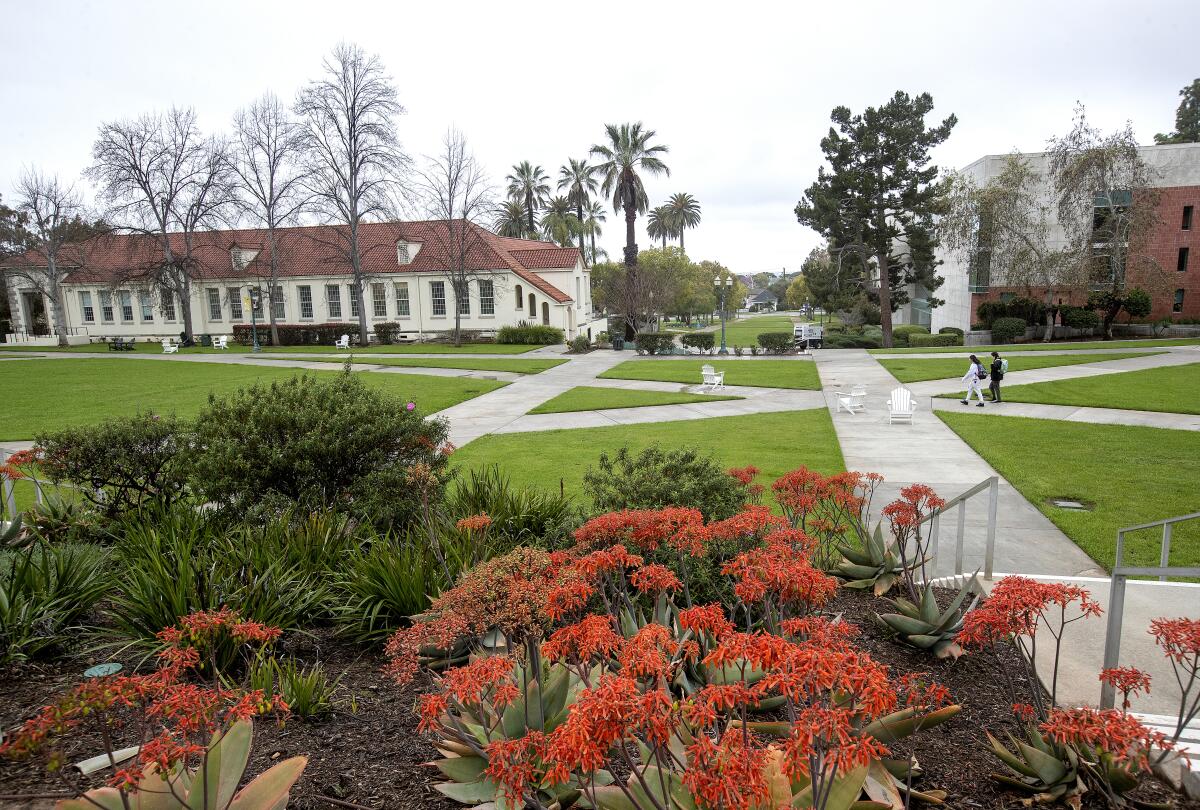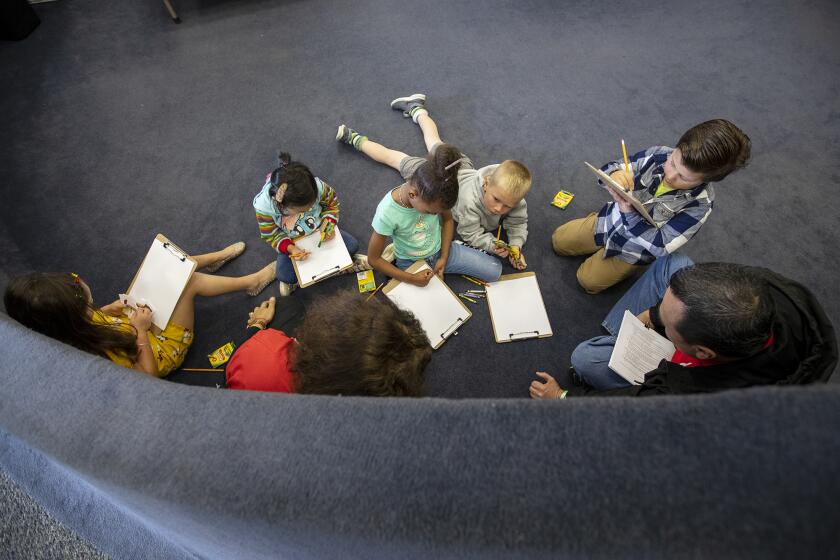Apodaca: What’s behind the downward trend in higher education?

- Share via
When I read in the Los Angeles Times last month about the dire condition of Whittier College, I dropped the spoon in my cereal bowl and nearly spilled my tea. I grew up in Whittier and am well-acquainted with the leafy 136-year-old campus that looks like it was dropped in from a quaint New England town. I even took a few classes there when I was a senior in high school.
But in recent years, Whittier’s enrollment and revenues have been plunging. The article painted a depressing picture of a school in decay, replete with dank dormitories and broken toilets.
I wish I could say that such problems are limited to one school, but alas, that’s far from the case. Indeed, you may have sensed that something about the whole college deal is different lately. Different in a worrisome way.
The nation’s colleges and universities are wrestling with societal, cultural, economic and demographic forces that are impacting everything from admissions to academic offerings to financial viability. Where the struggle to adapt to a changing landscape leads higher education over the long run remains to be seen. Nonetheless, it’s important to pay attention to these trends mid-flux, as some of them are already having a profound effect, as we see in the sad condition of Whittier College.
One of the most pressing issues facing higher ed today is that overall college enrollment is declining. There are more than one million fewer undergraduates now than there were less than four years ago.
There are many reasons behind the decreasing numbers.
Daily Pilot columnist Patrice Apodaca writes about the importance of educating students about how to relate to others and the world around them as some politicians work toward abolishing such teaching.
Enrollment had been steadily declining for about a decade before the pandemic. Rising tuition and associated costs of attending college, frightening levels of student loan debt, and other financial pressures are thought to be key reasons why many college-age kids have been choosing the workforce over chasing a pricey degree.
Squeezed state budgets and a shrinking population of high school graduates are also exerting pressure on many colleges and universities.
Then when COVID-19 hit, enrollment plummeted after the viral outbreak led to the temporary closure of campuses as colleges and universities switched to online classes, prompting many students and would-be students to opt out. Many schools have yet to recover from those losses.
Although name-brand universities and elite private institutions, for the most part, are still attracting record numbers of applications, the outlook is more uncertain for smaller, lesser-known schools. At least 23 public or nonprofit colleges have closed, merged or announced they will close in the past three years, and more than half of their students didn’t re-enroll elsewhere.
And that’s not even counting the failures of for-profit schools, which typically close at a much higher rate.
But even big universities are far from immune to the troubles plaguing their smaller rivals. The Cal State University system, for instance — the largest public university system in the nation — lost 27,000 students over the past two years. Earlier this year, it was put on notice by the state that its campuses must boost enrollment or lose some funding.
The declining enrollment outlook, the money troubles, the pandemic losses — these are all serious problems, to be sure. But there’s something else going on. Underlying those existential issues is another stark reality — that the bedrock rationale for a college education itself is under attack.
For decades, a college degree has been viewed as the surest path to middle-class prosperity. It has also been considered a source of pride, a vital component to the stories we tell ourselves about upward mobility and meritocracy, an ideal for families to pursue and hold up as evidence that each generation was surpassing the last.
But now reports of people questioning the value of college are saturating the media. It’s elitist, we hear, not worth the high cost, and certainly not worth going into debt. Wages are rising and more quality jobs are available for those without a degree, we’re told.
Humanities majors are particularly under fire. Editorials routinely opine about the worthlessness of such majors as English, philosophy and art history, because these degrees are thought by many to be dead ends in the job market. What’s more, their relevance in our modern, tech-driven society is increasingly questioned.
Students are obviously paying attention to such arguments — enrollment in many liberal arts mainstays has nosedived.
The much-discussed headline of a recent New Yorker magazine article put it bluntly: “The End of The English Major.”
But I believe such thinking is misguided. Tech and science grads do tend to get good jobs, but there are plenty of people with liberal arts degrees who are also doing well, thank you very much. It’s a mistake to discount the value of a well-rounded education that produces critical thinkers who know how to research, study, analyze and communicate well. Our nation would be poorer without them.
Yes, the population of school-age kids is falling, and that’s a reality that will impact higher-education for the foreseeable future. But when considering the question of costs versus benefits, the solution doesn’t lie in the second part of the equation.
The problem isn’t the subject or the intrinsic worth of education. It’s the ever-rising cost of college that needs to be addressed.
All the latest on Orange County from Orange County.
Get our free TimesOC newsletter.
You may occasionally receive promotional content from the Daily Pilot.





